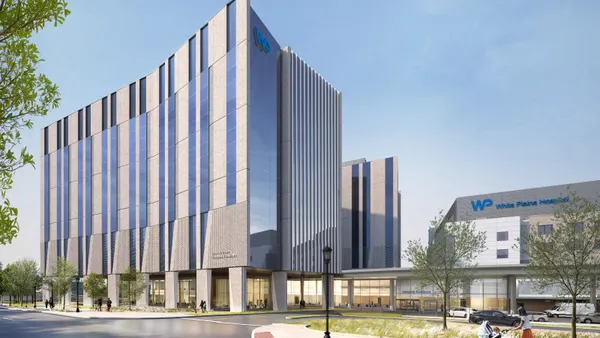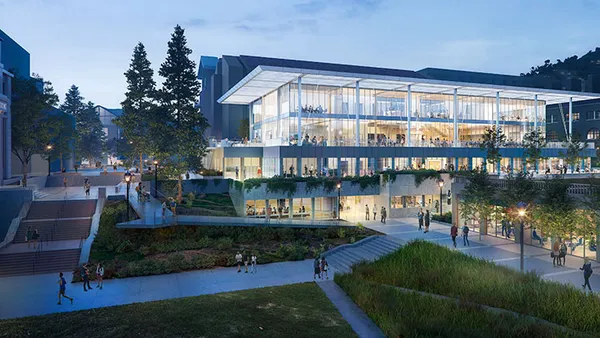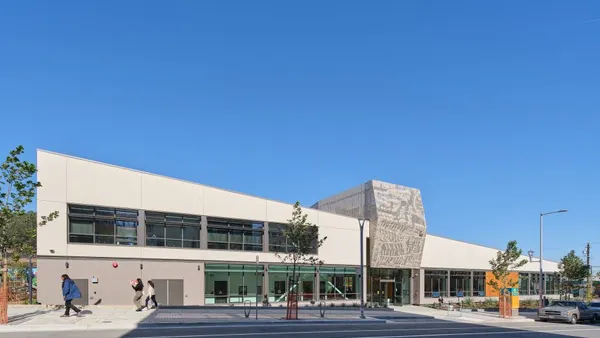Dive Brief:
- The American Institute of Architects surveyed leading architects to find out their perspectives on how nonresidential building design will change over the next 10 years, and it determined that renewable energy and technological innovations will play key roles.
- The AIA said respondents believe that water conservation and solar and wind power generation will become more prevalent over the next decade, as will the use of natural lighting techniques and lighting technology systems that use automated controls and motion-sensor activation.
- Surveyed architects also responded that they will expand their design options by selecting more innovative building materials like composites and new glass and glazing technologies. They also reported that the use of building information modeling (BIM) software will rise considerably, as will alternative project delivery methods and lean construction practices, in an effort to increase the efficiency of building design.
Dive Insight:
"Emerging technologies are becoming the dominant force in how buildings are being designed," AIA Chief Economist Kermit Baker said in a release. "Buildings in their own right are becoming far more energy efficient, and certain technologies are increasing both the efficiency of the people using the buildings and the project delivery methods in which buildings are being designed and constructed."
Improving project efficiency is a constant goal in the industry. This is where one emerging contracting method, integrated project delivery (IPD), is gaining a foothold. IPD is a collaboration between the major stakeholders on a project — owner, general contractor, architect, major subcontractors and suppliers — in which they enter into a mutual contract to collectively set project goals, risk-sharing, responsibilities and payment. Proponents of the IPD model say they can speed up completion, control project costs and reduce changes.
Green building is not a new concept, but green construction practices continue to grow in popularity, as more owners demand higher energy efficiency and lower environmental impact for their projects — in both the commercial and residential sectors.
It’s also clear that BIM, given its increasing sophistication, is continuing to gain in popularity. 3-D laser scanning technology data can now be incorporated into many BIM models as well as information collected from drones. Construction software companies are also using gaming engines to create more realistic models in which owners and contractors can often make real-time changes, eliminating confusion and saving time.












